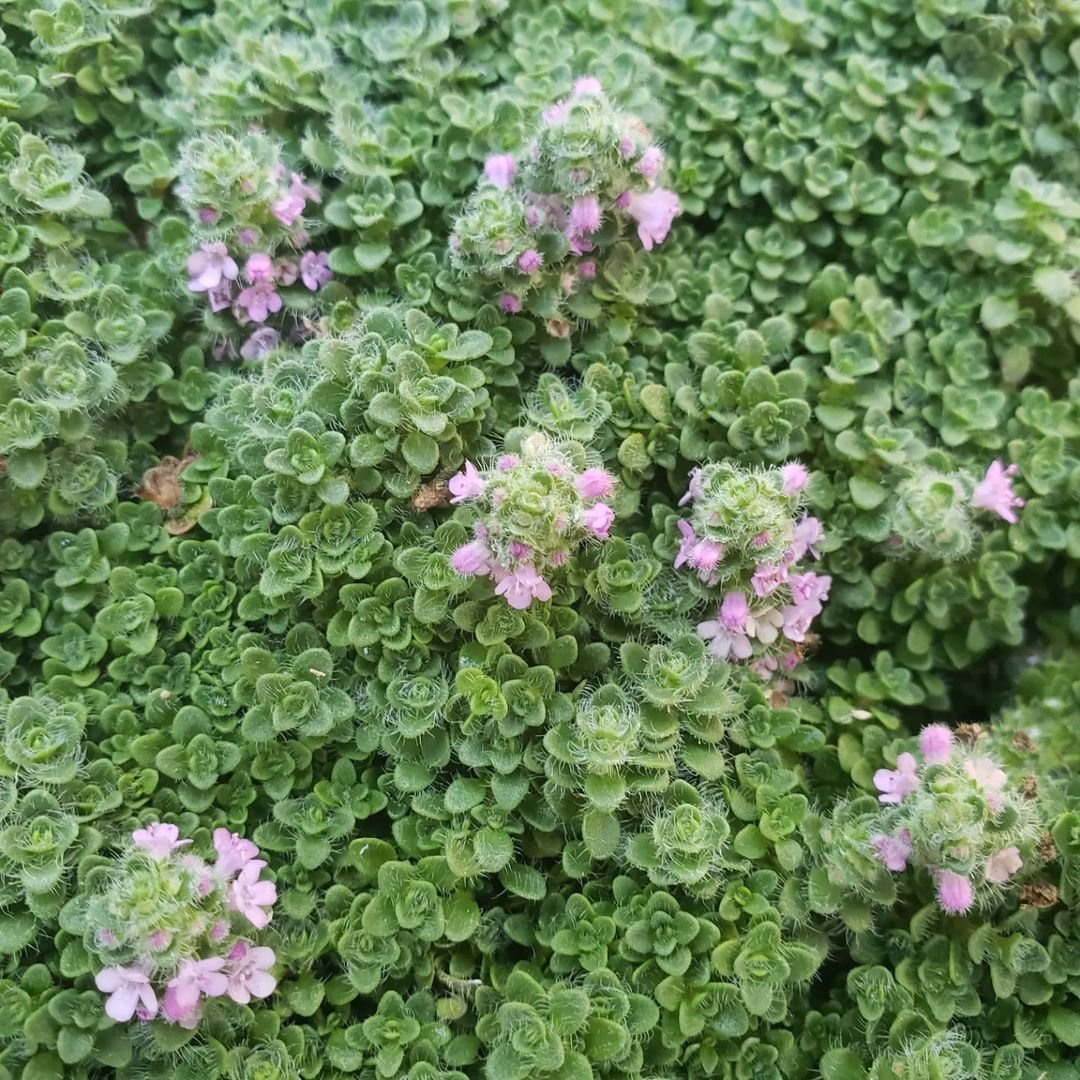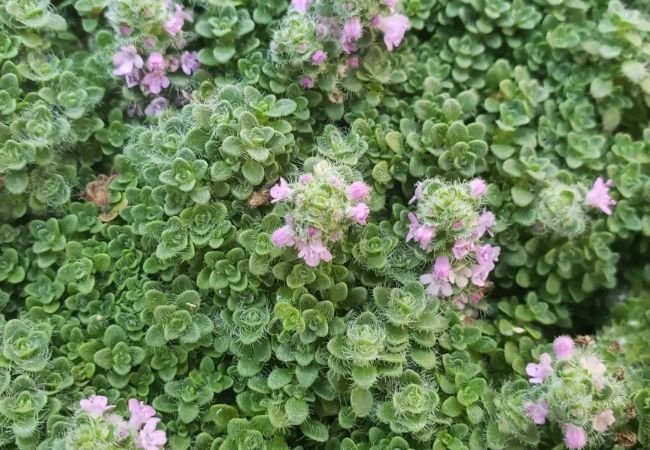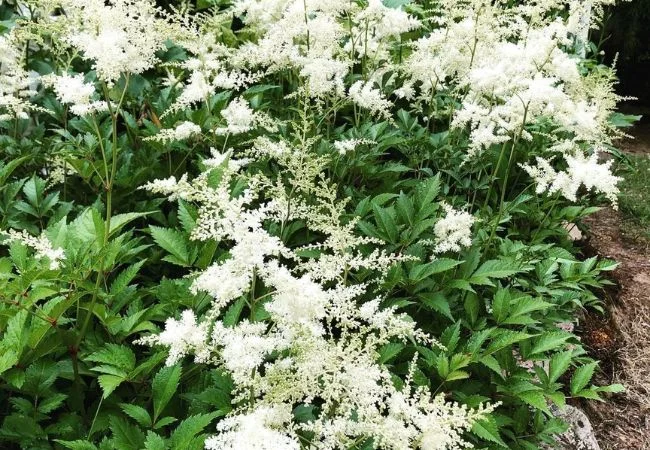Learn how to grow and care for Elfin Thyme, a delightful ground cover with tiny, aromatic leaves. Discover planting tips, maintenance advice and ways to use this versatile plant in your garden.
Elfin Thyme, scientifically known as Thymus serpyllum ‘Elfin’, is a miniature, creeping thyme variety that forms a dense, low-growing mat of tiny, fragrant leaves. This charming ground cover is prized for its delicate appearance, aromatic foliage, and ability to thrive in various garden settings.
Here is a chart with detailed information on Elfin Thyme:
| Category | Information |
|---|---|
| Botanical Name | Thymus serpyllum ‘Elfin’ |
| Common Name | Elfin Thyme |
| Plant Type | Evergreen Perennial Herb |
| Hardiness Zone | 4-9 |
| Sun Exposure | Full Sun |
| Soil Type | Well-drained, Sandy or Rocky Soil |
| Watering | Low, Drought Tolerant Once Established |
| Growth Habit | Low-Growing, Mat-Forming |
| Height/Spread | 1-2 inches tall / 6-12 inches wide |
| Flowering Time | Late Spring to Early Summer |
| Flower Description | Tiny, Pale Pink to Purple Flowers |
| Special Features | Fragrant Foliage, Edible, Drought Tolerant, Low Maintenance, Excellent Groundcover, Deer Resistant, Attracts Pollinators (Bees, Butterflies) |
Characteristics of Elfin Thyme

Appearance
- Tiny, oval-shaped green leaves
- Delicate pink to lavender flowers in late spring to early summer
- Forms a dense, carpet-like mat
- Typically grows only 1-2 inches tall but can spread up to 18 inches wide
Fragrance
Elfin Thyme releases a pleasant, herb-like aroma when stepped on or brushed against, adding a sensory element to your garden.
Growing Elfin Thyme
Ideal Growing Conditions
Sunlight
Elfin Thyme thrives in full sun to partial shade. It performs best with at least 6 hours of direct sunlight daily.
Soil
- Prefers well-draining, sandy or rocky soil
- Tolerates poor soil conditions
- Ideal pH range: 6.0 to 8.0
Hardiness
Hardy in USDA zones 4-9, making it suitable for a wide range of climates.
Planting Elfin Thyme
When to Plant
Spring or early fall are the best times to plant Elfin Thyme.
How to Plant
- Choose a sunny location with well-draining soil.
- Dig holes spaced 6-12 inches apart, depending on how quickly you want the area to fill in.
- Place plants in the holes, ensuring the top of the root ball is level with the soil surface.
- Backfill with soil and water thoroughly.
- Mulch lightly with gravel or small pebbles to help retain moisture and prevent weed growth.
Caring for Elfin Thyme
Watering
- Water regularly during the first growing season to establish a strong root system.
- Once established, Elfin Thyme is drought-tolerant and requires minimal watering.
- Avoid overwatering, as this can lead to root rot.
Fertilizing
- Elfin Thyme generally doesn’t require fertilization.
- If growing in very poor soil, apply a light application of balanced, slow-release fertilizer in early spring.
Pruning
- Trim lightly after flowering to maintain shape and promote dense growth.
- Remove any dead or damaged foliage as needed.
Winter Care
Elfin Thyme is quite hardy, but in colder regions, you can add a light layer of mulch for extra protection.
Common Pests and Diseases
Elfin Thyme is generally resistant to pests and diseases, but keep an eye out for:
- Root rot (in poorly draining soils)
- Spider mites (in hot, dry conditions)
- Aphids
If you notice any issues, treat promptly with appropriate organic or chemical controls.
Using Elfin Thyme in Your Garden
Landscape Applications
- Rock gardens
- Between stepping stones or pavers
- Lawn substitute in small areas
- Edge plantings
- Fairy gardens
- Container gardens
Companion Plants
Elfin Thyme pairs well with:
- Sedums
- Sempervivums (Hens and Chicks)
- Small ornamental grasses
- Other low-growing herbs like creeping rosemary
Propagating Elfin Thyme
You can propagate Elfin Thyme through:
- Division: Every 3-4 years in spring
- Stem cuttings: Take 3-4 inch cuttings in summer and root in moist soil
Benefits of Elfin Thyme
- Drought-tolerant once established
- Attracts pollinators like bees and butterflies
- Aromatic foliage
- Low-maintenance
- Can tolerate light foot traffic
- Deer-resistant
Culinary and Medicinal Uses
While Elfin Thyme is primarily grown as an ornamental plant, its leaves can be used in cooking, similar to other thyme varieties. It’s also known for its potential medicinal properties, including:
- Antiseptic qualities
- Soothing effects for coughs and sore throats
Always consult with a healthcare professional before using any plant for medicinal purposes.
Elfin Thyme is a delightful and versatile ground cover that can add charm and functionality to various garden settings. Its diminutive size, aromatic foliage, and low-maintenance nature make it an excellent choice for rock gardens, pathways, and small spaces. By following these care tips, you’ll be able to enjoy the beauty and benefits of this enchanting plant in your garden.
Whether you’re looking to create a fairy garden, fill in spaces between pavers, or simply add a touch of whimsy to your landscape, Elfin Thyme is sure to delight. Happy gardening!
For more gardening tips and plant care guides, visit usagardenhub.com







2 Comments on “Elfin Thyme : Growing and Caring for This Charming Ground Cover”